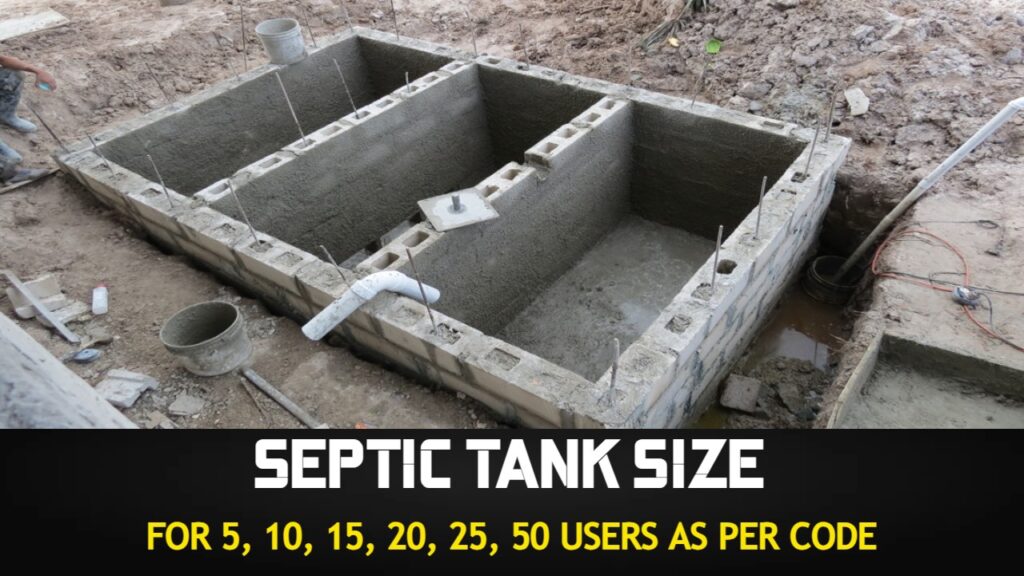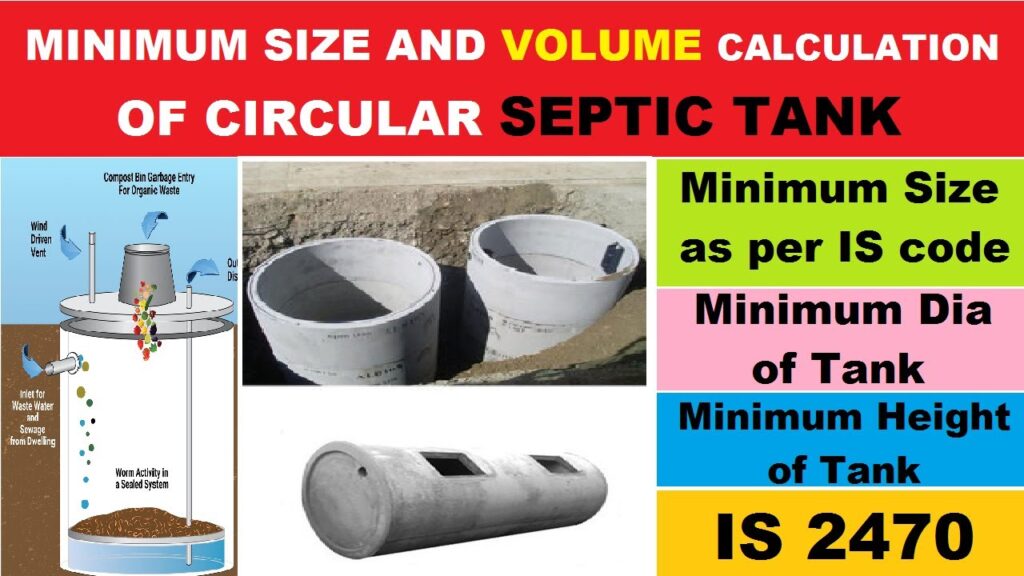In today’s post, I am going to tell you about the essential important terms associated with the Septic tank which you will need when designing or drawing a septic tank. Here you will get to know What is Septic tank, What is Effluent, What is Scum, What is Sewage, What is Detention Tank, What is Aerobic and What is Anaerobic Bacteria, What is Invert, What is Surface Water, What is Supernatant Liquor, What is Suspended Solids, What is T.W.L, What is Waste Water ( Sullage).
Effluent – The supernatant liquid discharge from a septic tank.
Scum – The greasy and other substances floating on the surface of sewage.
Septic Tank – A water-tight single-storeyed tank in which sewage is retained sufficiently long to permit sedimentation.
Invert – The lowest point of the interior of a sewer or drain at any cross-section.
Sewage – The liquid waste of a household or community including human excreta.
Sludge – Sludge is the settled solid matter in semi-solid condition
Surface Water – The run-off from precipitation and other water that flows over the surface of the ground.
Supernatant Liquor – The layer of liquid overlying the settled solids which have separated from it.
Suspended Solids – The solids which are suspended in a sewage or effluent.
T.W.L – The top water level in a tank.
Waste Water ( Sullage) – The discharge from washbasins, sinks, and similar appliances, which does not contain human excreta.
Detention tank – A detention tank is an artificial flow-control structure that is used to contain stormwater and wastewater for a limited period of time. The detention tank can be incorporated into the sewer network system at the wastewater treatment plant or at factories.
Aerobic Bacteria – An aerobic organism or aerobe is an organism that can survive and grow in an oxygenated environment. In contrast, an anaerobic organism (anaerobe) is any organism that does not require oxygen for growth. Some anaerobes react negatively or even die if oxygen is present
Anaerobic Bacteria – An anaerobic organism or anaerobe is any organism that does not require oxygen for growth. It may react negatively or even die if free oxygen is present. In contrast, an anaerobic organism (aerobe) is an organism that requires an oxygenated environment. Anaerobes may be unicellular (e.g. protozoans, bacteria) or multicellular.
Source: IS 2470 (PART-1)






